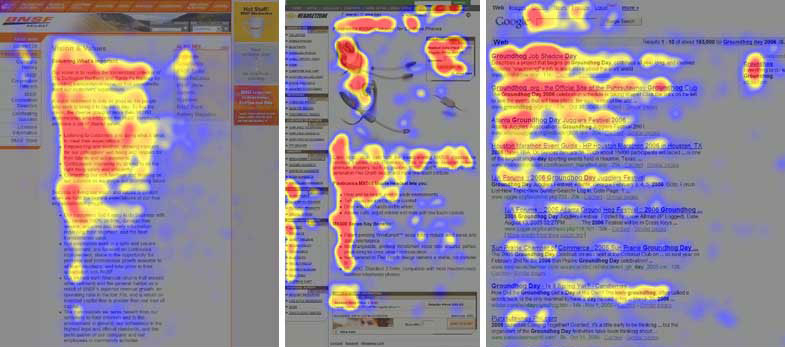The F-shaped pattern, a well-established eye-tracking pattern in web content consumption, has implications that go beyond web reading experiences. In workshop environments, such as brainstorming sessions, this pattern can lead to biases in idea selection when participants evaluate ideas presented on post-it notes.
This article discusses the relationship between the F-shaped pattern and potential biases when selecting or voting on ideas during brainstorming sessions and provides strategies to mitigate these biases.
What is The F-Shaped Pattern? A Quick Recap
The F-shaped pattern refers to how users typically read and scan website content. It consists of two horizontal movements followed by a vertical movement: Users start at the top left corner and read horizontally across the page, forming the top bar of the F. Next, they move down the page slightly and read another horizontal line, forming the lower bar of the F. Finally, they scan vertically down the left side of the page, creating the vertical stem of the F.
Learn more from the original 2006 study by Nielsen Norman Group.

Put group biased under control with Stormz!
Stormz is an easy-to-use facilitation platform for productive ideation sessions: onboard participants in 30 seconds, nobody is left behind, everybody is enjoying the ride!
The F-Shaped Pattern in Brainstorming Sessions
When ideas are displayed on post-it notes during brainstorming sessions, participants often start reading from the top left corner, mirroring the F-shaped pattern observed in online content consumption. As a result, ideas positioned in these areas may receive more attention and be perceived as more valuable or interesting. Consequently, this bias can skew the selection and voting process, leading to a potential disadvantage for ideas placed in other areas of the display.
Overcoming the F-Shaped Bias in Idea Selection
To ensure a fair and unbiased evaluation of ideas during brainstorming sessions, consider the following strategies:
- Adopt a non-conventional reading approach: Encourage participants to follow a systematic approach when evaluating ideas, such as reading each row from right to left or reading columns from bottom to top. You can also divide the participants into different groups, each adopting a different approach. This structured method can counteract the natural inclination to follow the F-shaped pattern.
- Rotate the flipcharts or panels: If the ideas are grouped on different boards or flipcharts, periodically rotate these panels during the idea evaluation process. This ensures that each group of ideas receives equal exposure, mitigating the F-shaped pattern bias on a macro level.
- Use a digital platform with a dynamic board like Stormz: Very few digital workshop platforms allow participants to view ideas in a randomized manner. With Stormz, setting ideas in a different random order for each participant is straightforward. It can also randomize the order of the clusters, which would be the equivalent of strategy 2. Of course, serious digital platforms can also facilitate anonymous voting, further reducing biases.
The F-shaped pattern can lead to biases in brainstorming sessions when ideas are displayed on Post-it notes. By adopting strategies to counteract this bias or using a digital tool like Stormz, you can ensure a fair evaluation and selection process, giving each idea an equal opportunity to be considered and fostering an inclusive and effective brainstorming session.